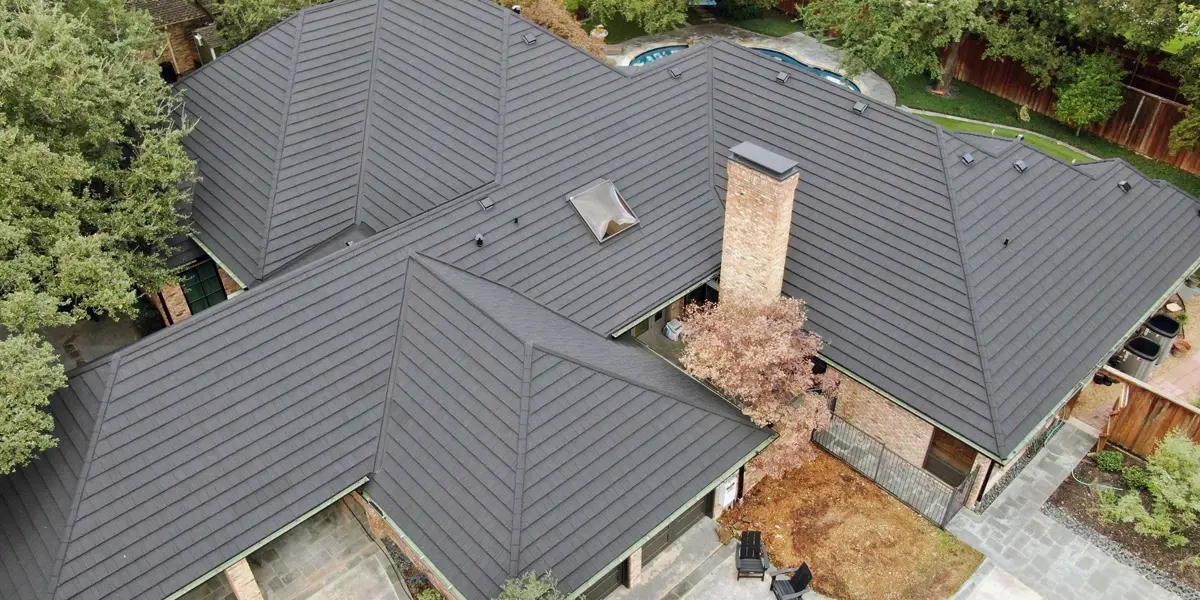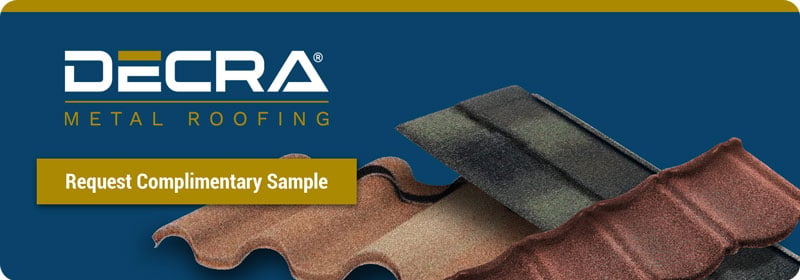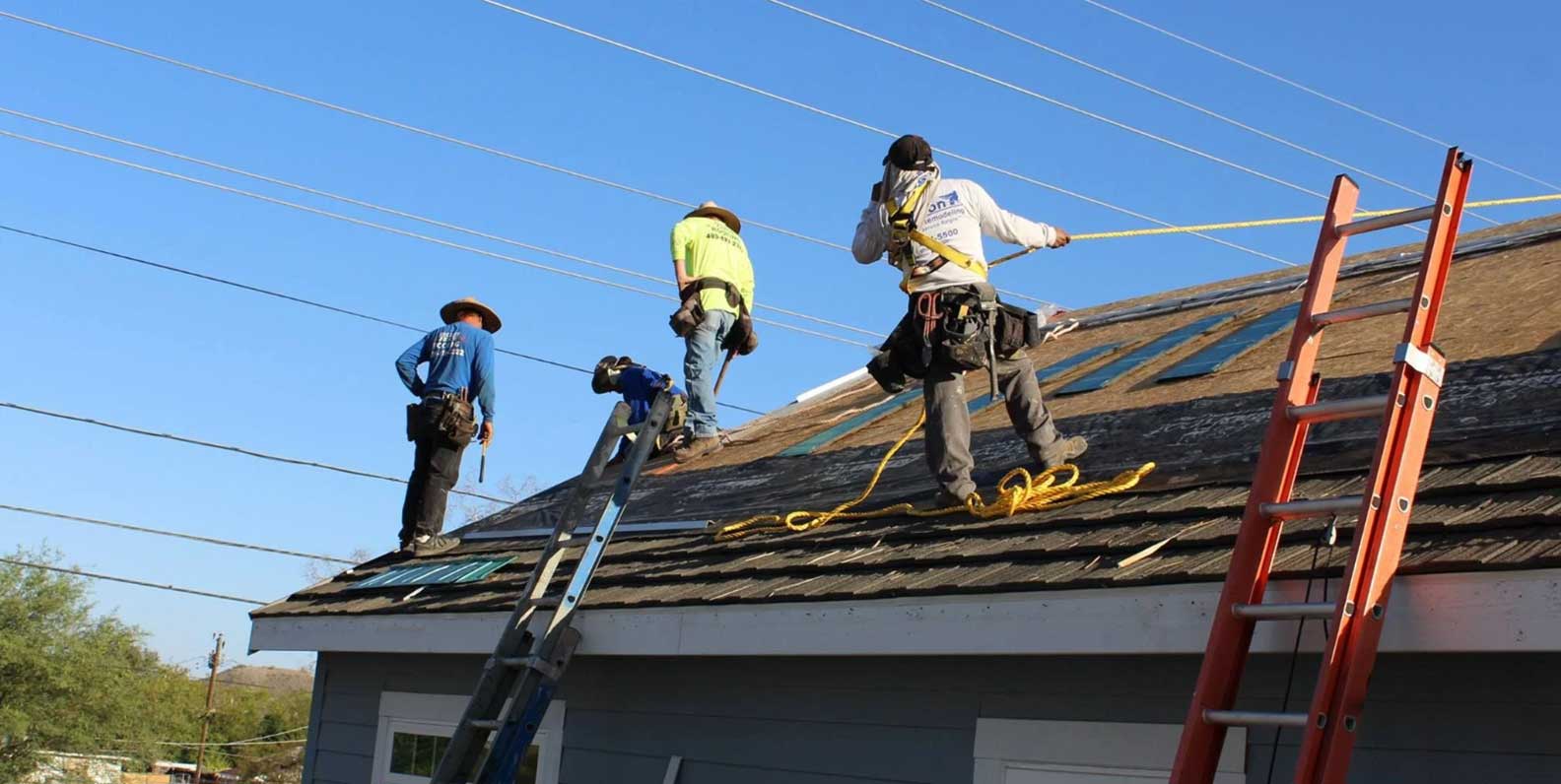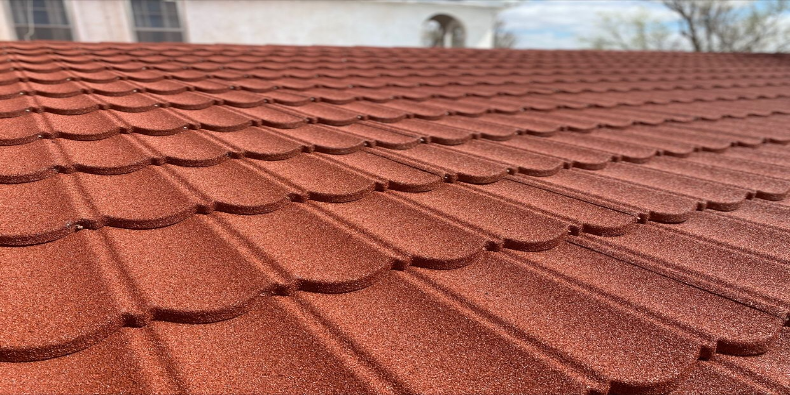With advances in technology, insurance companies are using drones to inspect roofs and reevaluate claims. This shift is largely driven by the need for more accurate assessments, especially after severe weather events. Drones allow insurers to quickly and efficiently assess roof conditions, leading to better-informed decisions regarding coverage and claims. However, homeowners with old or aging roofs may face higher premiums or even discontinued policies as insurers seek to minimize risk.
In this article, you’ll learn about:
- The growing trend of insurance companies using drones for roof inspections.
- The benefits of stone-coated metal roofing compared to traditional materials.
- How metal roofing can help homeowners maintain affordable and reliable coverage.
Why Are Insurance Companies Using Drones for Roof Inspections?
Insurance works on the idea of shared risk. Customers are grouped into pools, and payouts come from this shared pool.
However, insurers say these pools aren’t enough to cover the increase in claims from more severe weather, wildfires, and rising construction costs. As a result, they are raising rates when they can or dropping customers they see as more likely to file claims. In some states, raising rates is limited by the insurance commission, making cancellation an easier way to keep their payout pool adequate.
Old, damaged, or poorly installed roofs are seen as higher risks by insurance companies. Drones can easily spot these issues, leading to a significant number of dropped customers.
For homeowners with mortgages, losing insurance coverage can have serious consequences, as lenders require property insurance. Homeowners who lose coverage may need to find new policies, sometimes from state-managed plans that are more expensive than those from private companies. Therefore, homeowners needing a new roof should consider metal.
How Metal Roofing Compares to Traditional Roofing Materials
Why might an insurance company prefer to renew a policy for a home with a metal roof instead of other roofing materials? Let’s explore how stone-coated metal roofing compares to traditional materials.
Longevity
A metal roof can last two to three times longer than traditional materials like clay tiles, asphalt shingles, or wood shakes. This longevity provides both homeowners and insurance companies with confidence that the roof won’t need replacement for many years.
What contributes to the longer lifespan of metal roofs? One key factor is their resistance to damage, which we’ll explore in the next three sections. Damage can significantly shorten a roof’s lifespan, making it vulnerable to dislodgment and deterioration.
Hail Resistance
Hail impact is a leading cause of roof damage across the country, costing American homeowners and their insurance carriers upwards of $1.5 billion. Because of this, insurance companies prefer roofs that provide superior impact resistance. This helps reduce the need for repairs, which average around $4,250 per home and are often covered by insurance claims.
Metal roofing is your best defense against hail damage. For instance, DECRA carries the highest Class 4 Impact Rating for hail and is warrantied for hail up to 2.5 inches in diameter.
This rating comes from the UL2218 Impact Rating Test, which is the national standard for measuring a roof's ability to withstand hail damage. During testing, two-inch steel balls are dropped from 20 feet onto the roofing material. To earn a Class 4 rating, the roof must show no signs of penetration or fracture.
Traditional roofing materials can’t offer this level of protection. Clay tiles, for example, are particularly vulnerable to impact throughout their lifespan. Even routine maintenance can cause damage to tiles, making them extremely fragile when it comes to more severe impacts like hail. Asphalt and wood roofs, on the other hand, become more susceptible to damage as they age, with their ability to withstand severe weather decreasing over time. Repeated exposure to harsh conditions, such as hail, wind, and rain, accelerates the deterioration of these materials, which is a concern for insurance companies during aerial assessments.
Wind Resistance
High winds can cause significant damage to roofing, sometimes even blowing it off completely. This occurs when the pressure above the roof is lower than the pressure below, creating a push-pull force that can lift the roof off its decking. The most vulnerable areas include overhangs, corners, eaves, rakes, and ridges.
DECRA mitigates this issue by using an interlocking panel system that securely fastens each panel to the roof deck. This system prevents the panels from being lifted or displaced by high winds, a common issue with traditional roofing materials such as asphalt shingles, clay tiles, and wood shakes, which can loosen and detach under wind stress.
DECRA roofs are also TAS-125 approved for high-velocity hurricane zones and come with a warranty for winds up to 120 miles per hour. Whether your home is exposed to hurricanes or tornadoes, your insurance provider will value the protection DECRA offers.
It’s important to remember that wind often comes with rain. The same DECRA system that prevents wind uplift also blocks rain from seeping into small openings, a common issue with traditional roofing materials. Our roofing materials have been tested against wind-driven rain at speeds of up to 110 miles per hour.
Fire Resistance
Wildfires can occur in nearly every region of the country, raising concerns for insurance companies. To improve your chances of maintaining insurance coverage, homeowners should opt for roofing materials with a Class A Fire Rating.
While many traditional roofing materials fall short of Class A standards, DECRA meets these requirements, which insurance companies recognize.
Why Metal Roofing Is a Wise Choice to Save or Even Lower Your Insurance Coverage
Armed with the information above, you can see why insurance companies prefer properties with metal roofing, as it reduces the likelihood of needing to file a claim.
When homeowners do need to file a claim, they often receive a pleasant surprise with metal roofing. As a roof ages—around 10 years—the value and amount of replacement coverage through insurance typically depreciate. For instance, in Florida, while other roofing materials may cover only 25-40% of replacement costs due to legislative limits, metal roofing can provide coverage of about 70%.
Not only can a metal roof help you retain insurance coverage, but it may also qualify homeowners for discounts on their premiums. While every home and insurance provider is different, many property owners and contractors report discounts of up to 25%. Over time, these savings can really add up.
Metal Roofs Appeal to Homeowners and Insurers
The durability and longevity of metal roofing make it a smart choice for both homeowners and insurers. Don't let a drone inspection jeopardize your coverage—request a complimentary sample today.







